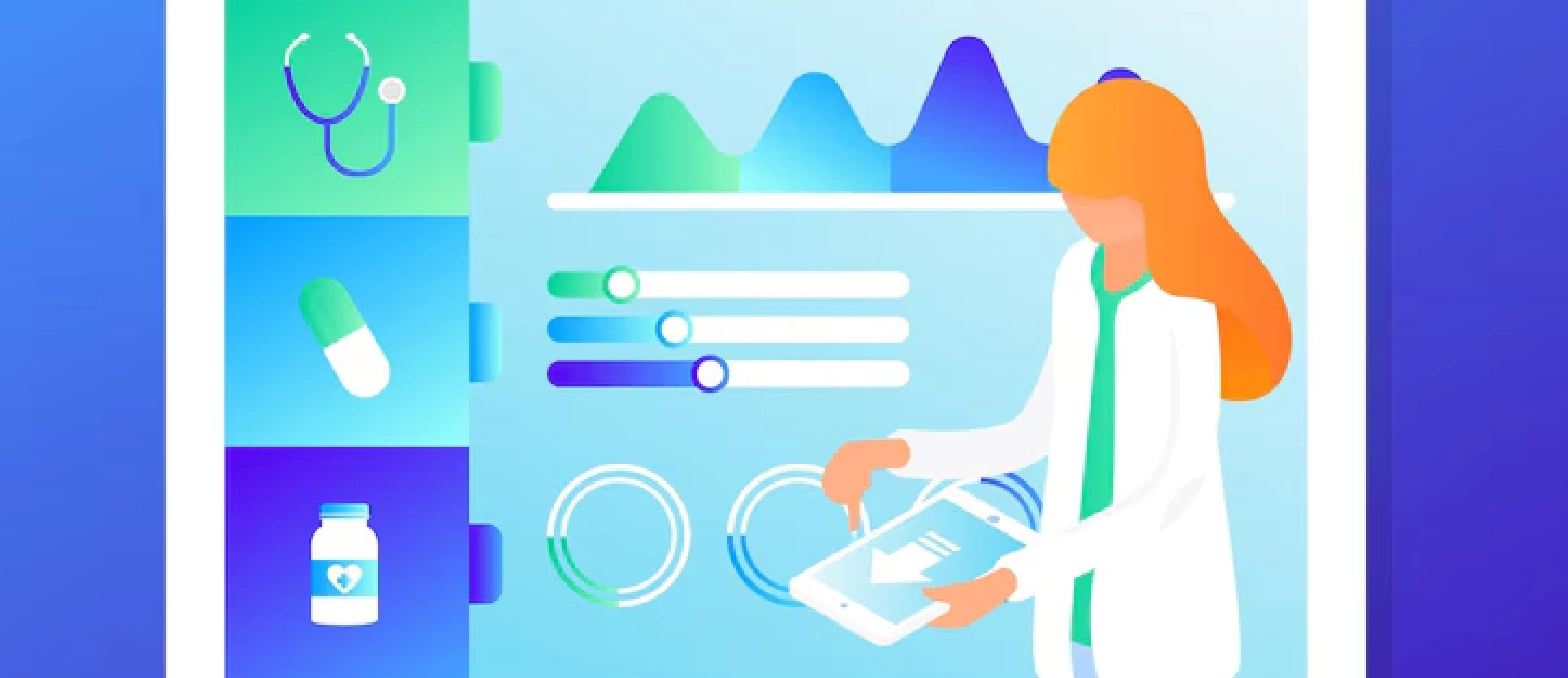Table of Contents
No industry is truly immune to the current global trends in employment. Coined as the ‘Great Resignation’, this era of shifting professional role shuffles, job departures, career changes, and even voluntary unemployment has defined the 2021-2022 period. In the new year of 2023, while these resignations may not be making the news they were in the last 18 months, current U.S. Bureau of Labor data actually shows that in the third quarter of 2022, 2.7 percent of the workforce quit for the third month in a row. While these resignations are slowing down, a ZipRecruiter chief economist Julia Pollak remarked to Insider, “the Great Resignation is far from over, but it is clearly sort of winding down.”
Right now on the employee side of things, people report diverse and complex reasons for leaving jobs including pursuit of a higher salary, better work-life balance, flexibility (remote work or hybrid work), greater personal satisfaction, or burnout. Beyond the actual organizational costs of hiring then losing staff — it costs an average of at least $1,500 USD for hourly employees to 100-150 percent of a technical employee’s salary — there is an overriding desire to retain great talent. A sense of loyalty, professional growth, team contributions, and career opportunities are things that every employee is looking for that employers also want to offer their teams.
The role of operations systems for staff satisfaction in the workplace
So what can employers do to support their teams? One area that an organization could be missing that is causing issues is their day-to-day tools. Let’s start with why this is relevant both in terms of why operations systems matter and the role they play in the working life of staff members. It might seem arbitrary but this can be an unshakeable aspect of how workers perceive their overall employment conditions. Just as importantly, this can be a major factor in how they think about their workplace as a whole. From hating the IT department to frustrations with learning systems, operations systems inclusive of organizational software form the actual experiential architecture of the vast majority of modern jobs.
In the same way we hear about people hating the physical aspects of their workplace, the same can apply to the operations systems that make up the daily project management and operational processes of their roles. Take for example the kind of outcry heard around the world whenever a tech company releases an interface or version update that people loathe. One Wired article from Chris Stokel-Walker that substantiates this is the December 2021 article about Microsoft Windows 11 that investigated the marketing objectives of the product’s release rather than a goal of enhanced user experience (UX): “And part of that is by branding Windows 11 as a shiny new release that people will want to use in a post-pandemic, hybrid working world – even if the reality isn’t the same.” Stokel-Walker explains the negativity of this strategy further, “One in four people say they won’t upgrade to Windows 11.” For a billion-dollar company this is serious news. Still not convinced about how passionately people respond to systems? Try searching “Windows 11 hate” — this turns up over 56 million results. Systems really can have a profound impact on personal experiences and attitudes so UX should be part of deciding which systems to use, especially in workplaces where it can affect productivity and job satisfaction.
A foundation of Human Capital Management (HCM) operations system provides staffing solutions for payroll, HR and talent management, benefits, support, and wellbeing
Getting systems right in the working lives of employees is a staff-oriented technology solution to creating a better workplace. Moreover, the attention-to-detail associated with this kind of technology Software as a Service (SaaS) investment feeds in to countless positive upsides. A solid, robust, and user-friendly HCM operations system is designed to improve the following areas of organizations:
- Internal and external communications
- Human Resources (HR) processes including recruitment, onboarding, and performance management
- Compliance standards
- Employee services including payroll, recreational and leave entitlements, training, professional development, benefits administration, and complaints
- Staff wellbeing and support services
- Databases for confidential stakeholder information including employees
- Reduced workplace stress and human error mitigation
These systems logically dovetail on to workflow and productivity due to how much more streamlined and accessible essential organizational processes become. When these HCM systems are integrated with project management tools such as Asana or Google Drive, task-specific programs such as Adobe Suite, and standard administrative software such as Microsoft Office, there is an even greater return on investment because the organization is decisively adhering to technology that is actually suitable for that workplace.
Choosing and onboarding everyone with the operations systems including HCM software
So how should a workplace approach bringing in a fully-fledged HCM operation system and other products? The ideal place to start is with an audit of all existing software and technologies used across the team. It goes without saying that this can vary significantly depending on the industry, the range of workplace teams, and even if the organization uses freelancers. There is really no pro forma for an audit like this outside of establishing exactly what is being used currently, why it is being used, the level of satisfaction with the system or software, and how these generally affect the day-to-day work enjoyment of each employee. Some of these metrics may seem fluffy or too subjective however they actually start to root out the qualitative staff experiences and views with the gathering of rich data that can then be reviewed across a quantitative sample of all team members.
Following this kind of audit, management are positioned to start their evaluation and decision-making for new operations systems including HCM software. Once decisions have been made about which system or even systems are being introduced, senior managers can start working collaboratively to design their implementation frameworks. As this is a technological system that will be used across an entire organization, change management needs to be approached with the utmost circumspection. Factors that are relevant in every workplace for the onboarding period are:
- Personalized and workplace-specific introductions — make sure everything is as specific as possible to how the organization and industry operates.
- Age — segments of technology can be very isolating depending on user confidence and experience with different system interfaces; especially if there is a wide cross-section of ages in the workplace, allow for this in the training support structures, plus make an open-door policy with HR and associated managers for the specific software/systems.
- Training models — plan information delivery for different learning styles, offer ongoing support, and adopt the culture of ‘AQUAROK’ (Any Questions Asked Are Okay).
- Integration — don’t rush integration and have explicit explanations for the expectations of managers with how everything is going to work.
- Time-based — set milestones for implementation, reviews, and ongoing assessments for how operations systems are working for staff members; ensure to ‘temperature check’ their emotional position on the system and ask for input on how the product is affecting their role.
Promote feedback and support access through HR and workflow software solutions
Part of integrating operations systems in a way that builds staff trust and therefore retention, is to normalize and cultivate a culture of feedback and support access. This has two elements of making the workplace more enjoyable, fulfilling, and productive: firstly, it shows how the systems chosen are for them personally, and, secondly, it develops positive psychology around ways that the systems are being utilized to solve problems. With the latter element in particular, the positive association of systems can reinforce their value to staff who are already in favour of their use and for any staff who are skeptical, it allows time for their acceptance and, ideally, their embracing of it too.
Another approach to new technology integration is to clearly demonstrate the new process flows of these operational solutions. In many cases, the new operations systems will be a wave of fresh technical aspects in the form of the UX and the user interface (UI). Even with training, there is a lot of unfamiliar information and design components to gain literacy with in theory as well as in application.
Some steps for resolving any issues early on are to:
- Bring training off the systems and post core information that is easily understandable around the common — digital and physical — workspaces.
- Focus on getting everyone to a point where they can speak the system language and navigate themselves around this ‘new’ part of the workplace.
- Maintain offline routes for feedback and support access for ongoing general job, personal, HR, and technical needs with explanations for the software areas that can be used for this, too.
- Regularly communicate with all staff members about the software and each functional process in order to improve their employee experience. They should be supported in the use of the system so that when the time comes to give feedback or to seek personal support, the role of the software in doing so is understood.
Fortunately the right system solution for each workplace is now designed in a way that makes it a breeze to use, features and functions are easily found and navigated, and knowledgable team members, like HR and IT, have enhanced capacity to provide technical or process help to team members who need it. The current wave of HCM systems and operational SaaS solutions have product features designed to be effective: they’re engaging, have an effortless UX with a slick UI, and have personalized features that make the system successful from Day One of integration no matter the scale of the organization.
Leveraging the employee-centric end-to-end features of HCM SaaS
Over the last five years, HCM SaaS and related operational technologies have become increasingly user-centric. Tarika Arun sums this up for Zoho writing, “From identifying their training needs and administering training programs to supporting regular performance reviews and facilitating two-way feedback from managers and peers, HCM software leaves no stone unturned when it comes to supporting employee development.” These have all evolved in the global experiment with mass remote work with systems supporting staff to work from wherever and whenever thanks to how next-gen SaaS operates as cloud or hybrid products. Better security means widespread remote use is possible so employees can benefit from product features such as working with databases via a centralized point on an accessible server. Workers can even undertake training and access wellbeing options that are remote and much more comfortable compared to their in-office iterations. Furthermore, organizations can promote and deliver their staff-centric offerings across nearly every area of need including the onboarding of new employees, systems feedback, support benefits, and technical needs. This is because these are multifaceted services that minimize disruption and stress to workers. From here onwards what is deliverable through these systems is largely limitless meaning organizations can proactively extrapolate what is affecting their staff then try to have these issues addressed via the SaaS product.
This is where the next wave of this software comes in. Sophisticated systems including HCM SaaS are now ultimately all about the employee experience and the operational, process features are becoming the background standard rather than the standout points of value. In every single way — from HR team members to individual workers and even management — the goal is to resolve problems and achieve the best work. As already discussed, tools are crucial in this. What’s exciting is that this kind of operational SaaS technology can actually build more meaningful connections and act as a facilitator for elevated workplace relationships. By the end of the 2010s and now early in the 2020s, the Employee Experience Platform has emerged as part of how many HR professionals think about HCM software solutions. This technology far exceeds the previous process features of these systems and additionally focuses on integrating as much of the work experience as possible. Josh Bersin references the rapid expansion of the EX companies in this space that are targeting the “upper layers” of HCM and IT services; these upper layers are defined as employees first, technology second wherein staff have become the customers of their employing organization. Bersin elaborates, “If your problem is a lack of consistent data or poor career experience for employees, in most cases you’re better off fixing the implementation you have and focusing your dollars on the upper layers.” The development of HCM software that actually expands on HR services while increasing productivity and underpinning all other business processes goes a long way to improving the work lives of employees. This is turn can encourage staff retention. It can certainly be hypothesized then that this next era in SaaS is incredibly promising for business transformation, more agility in communications, retaining staff, and supporting workers for both their short-term and long-term work trajectories.
What can we expect from workplace technologies, HR and talent management SaaS, and enterprise systems moving forward?
Looking forward, workplaces will continue to evolve and technology is central in this. Nevertheless, and even with the rise in automation and increase in artificial intelligence (AI) services such as chatbots, the actual human resources are still at the heart of how everyone works. We’re not going to replace the unique contributions of people and technology actually makes the work only we can do better while freeing us from tasks that can in turn be allocated to automated or AI systems.
From an impetus standpoint, there’s plenty of financial incentives for getting SaaS and enterprise systems that properly fit with each organization; in fact, one Gallup study found that employee disengagement is estimated to cost the global economy $8.1 trillion USD in lost productivity each year. Another report from HubSpot found that lost productivity costs U.S. businesses a shocking $1.8 trillion USD every year. All organizations, irrespective of if they are commercial, public services, private sector, or NGOs, still need the dynamic technological solutions HR/talent management HCM SaaS and operational software systems offer. As we move further into the third decade of the 21st century, software will remain the framework of our integrated digital and physical worlds yet the transformation of current systems will progressively become both more ergonomic and an actual enabler in innovative, sustained workflows.






